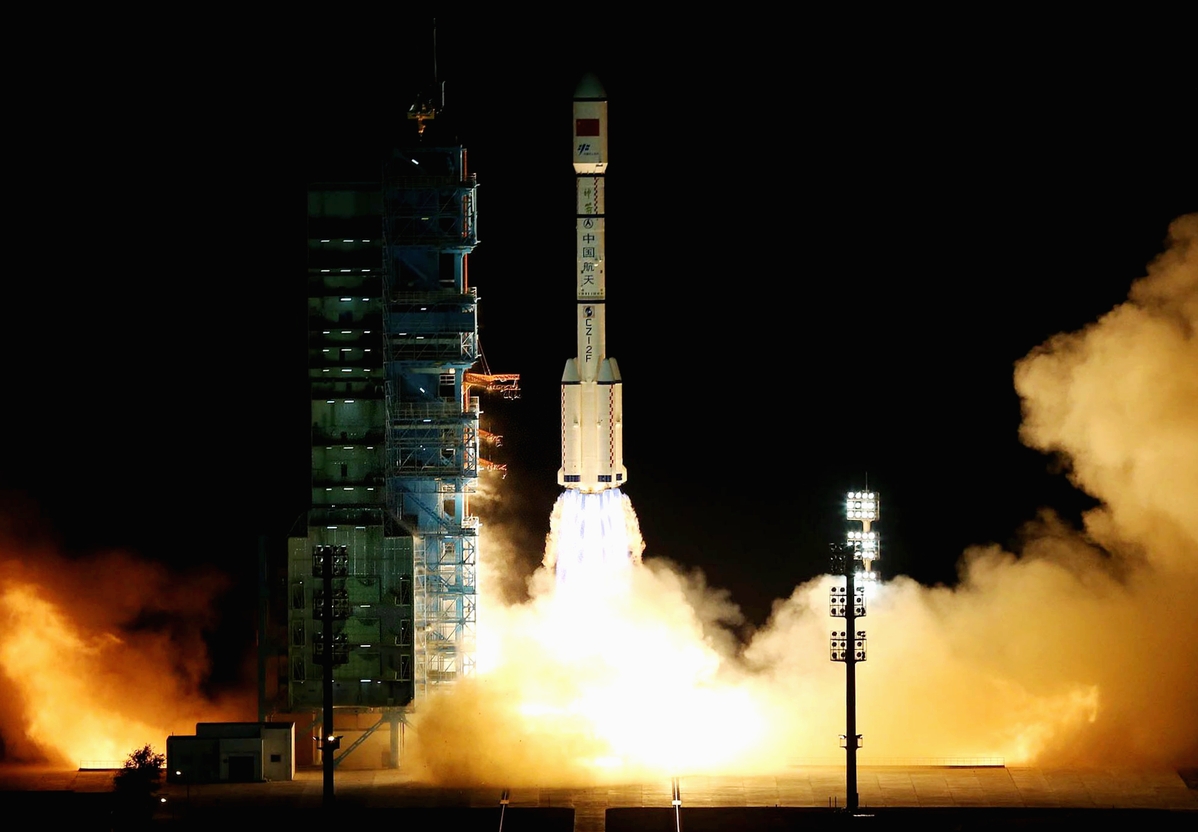Tiangong II pushes new research boundaries
Tiangong II has fulfilled all its planned missions within its designed two-year life span. It will now focus on conducting additional experiments and testing new space applications that can benefit society.

Tiangong II blasts off from the Jiuquan Satellite Launch Center, Gansu province, on Sept. 15, 2016. [Photo/Xinhua]
Benefiting society
During a livestream session on Nov. 20, 2016, Jing Haipeng and Chen Dong, the astronauts aboard Tiangong II, conducted an unusual experiment in orbit-drinking the first cup of tea in microgravity.
They "poured" water into the bottom of a special cup and watched it flow upward into the chamber. The water then mixed with a pu'er tea paste, and the mixture was automatically heated without using a flame.
Jing then drank the tea while floating upside down. "Delicious" he said after finishing the drink while drifting leisurely in the cabin.
Jiang Xiaowei, vice-president of the Association for Space Biotechnology Development in Yunnan, the creator of the "space tea", said, "For decades, astronauts could only drink liquid by squeezing pre-made bags of fluid. Drinking tea in space, like on Earth, was unthinkable."
To improve astronauts' drinking experience in space, CMSEO created the special cup used in the demonstration. However, bioengineering the tea so that it could be drunk in space was very tricky, Jiang said.
The tea must dissolve fully without boiling water being used, as this can be dangerous in space, she said. The paste also cannot leave any residue, because this could create unnecessary trash in the cabin.
Yunnan is home to many of the country's tea producers, Jiang said. "The space tea can not only improve living standards and health for astronauts, its manufacturing techniques can also help reform China's tea industry and make it more appealing and competitive in the global market."
Space tea is one of many technologies that can benefit people on Earth. According to NASA, many of the technologies it has developed have filtered down to mass use, including dehydrated foods, memory foam, scratch-resistant lenses, baby formulas and body-imaging techniques in medicine.
Li Shenchong, a botanist from the Academy of Agricultural Sciences in Yunnan, said China is hoping to build a "flying greenhouse" in space to produce new varieties of plants and crops that can benefit future astronauts and local economies.
"The microgravity and radiation in space can mutate plants' genes, possibly leading to new varieties with more positive traits, such as high-yielding and insect-resistant types," he said.
Since 2016, China has sent 94 different types of garden flowers, medicinal plants and fungi into orbit for selective breeding, Li said.
"New plants with more positive traits will have higher economic values, and this will help improve earnings for farmers and make China a greener and more beautiful country."
Apart from commercial products, Tiangong II has provided geological and climate data for more than 70 government agencies and research institutes in China, Lyu said.
The data are widely used and invaluable for weather forecasting, environmental protection, disaster relief and use of land and marine resources, he added.

